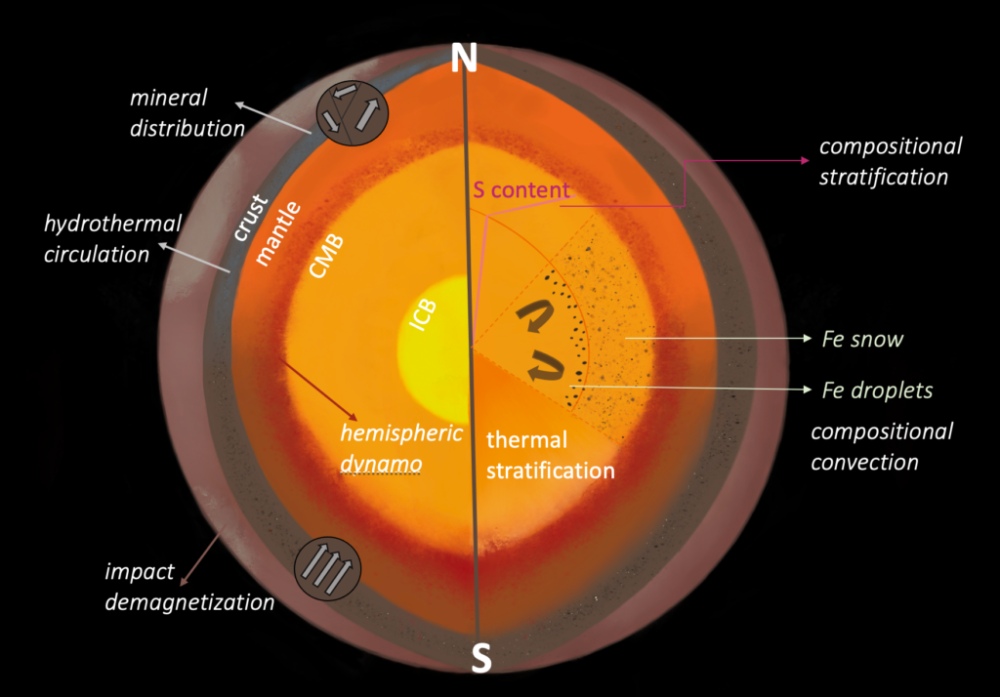
Current “Earth-like” numerical dynamo simulations are able to reproduce many characteristics of the observed geomagnetic field. One notable exception is the geomagnetic octupolar component. Here we investigate whether a stably stratified layer at the top of the core, a missing ingredient in standard dynamo simulations, can explain the observed geomagnetic octupole [Yan & Stanley, 2018].
Saturn’s magnetic field is unique among all planets in our Solar System, not only because of its axisymmetry, which was first detected by Pioneer 11, later confirmed by Voyager I, II, and the recent Cassini Grand Finale. However, this level of axisymmetry is problematic in dynamo theory, and unusually seen in numerical modeling or in planets that have or once had active dynamos, with the exception of maybe Mercury. This suggests Saturn’s interior dynamics may be different than the canonical uniform convection. Here we use numerical dynamo modeling to decipher the state of Saturn’s interior, by working out a dynamo model that reproduces Saturn’s magnetic field [Yan & Stanley, 2021].

Magnetic field observations from the MGS, MAVEN, and InSight missions reveal that a dynamo was active in Mars’ early history. One unique feature of Mars’ magnetic crustal field is its hemispheric dichotomy, where magnetic fields in the southern hemisphere are much stronger than those in the northern hemisphere. Could this hemispheric crustal magnetic field have an internal origin, i.e., result from a hemispheric dynamo? [Yan et al., 2023]